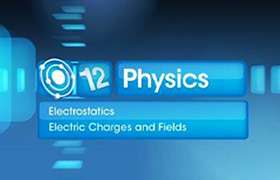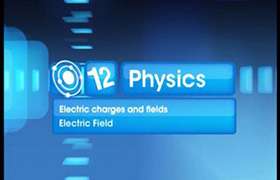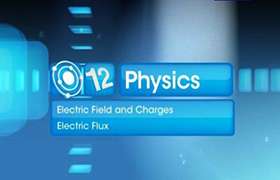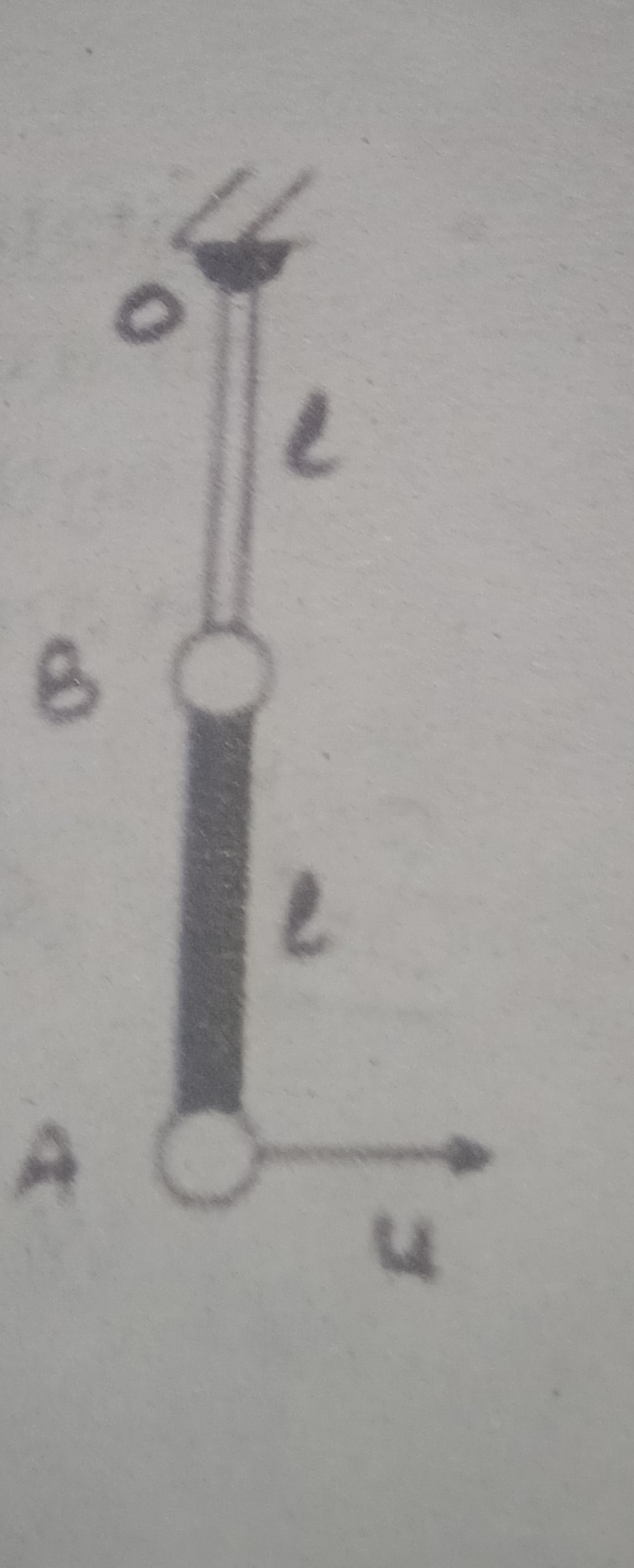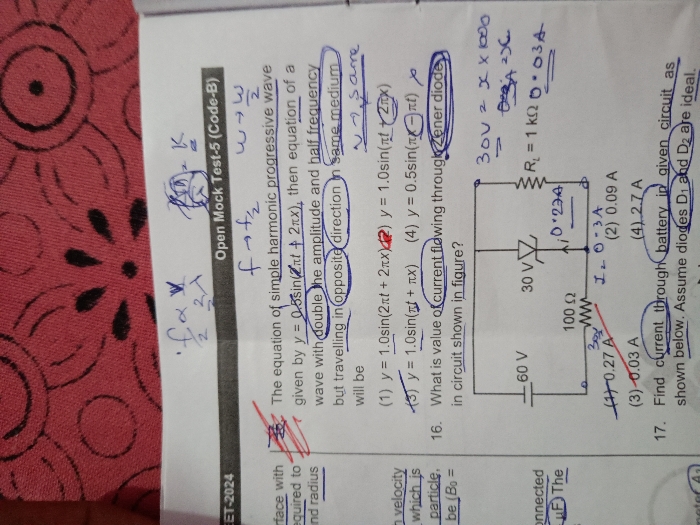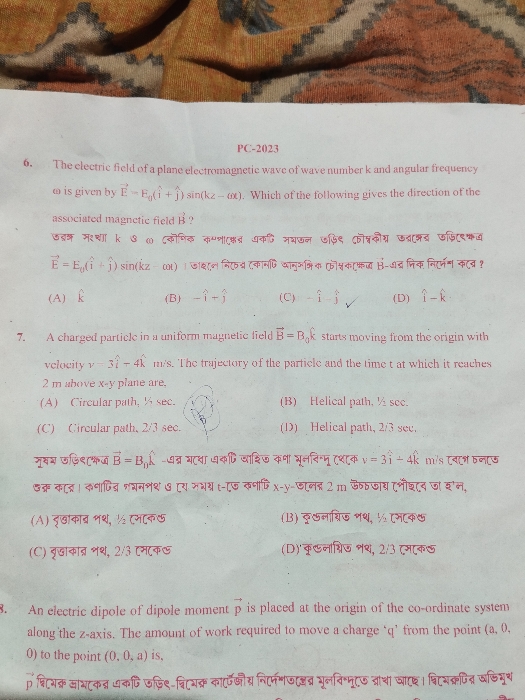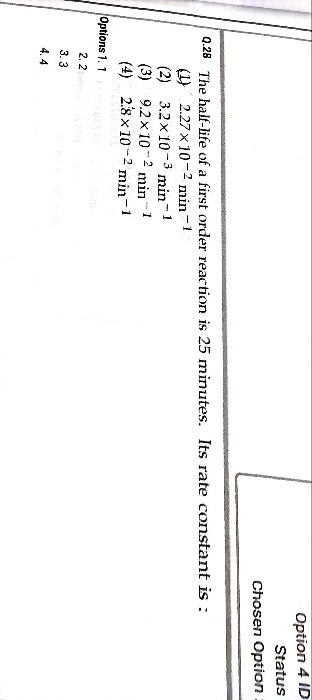CBSE Class 12-science Answered
I want answer
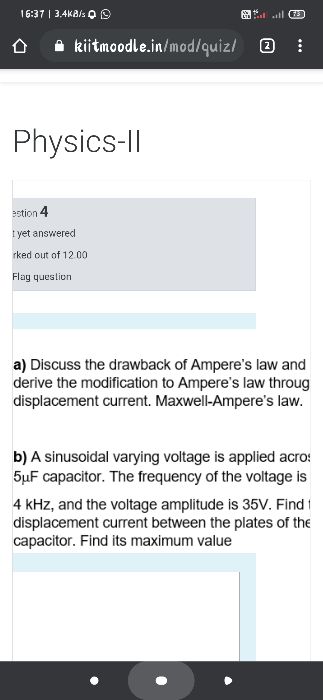
Asked by mansisamal242 | 25 Jan, 2021, 04:43: PM
Part-(a)
Let us consider the process of charging of a capacitor and apply Ampere’s circuital law as given below to find magnetic field
at a point outside the capacitor.
 ................(1)
................(1)
Figure (1) given above shows a parallel plate capacitor C which is a part of circuit through which a time-dependent current i(t )
flows . Let us find the magnetic field at apoint such as P, in a region outside the parallel plate capacitor. For this, we consider a plane
circular loop of radius r whose plane surface is perpendicular to the direction of the current-carrying wire, and which is centred
symmetrically with respect to the wire. From symmetry, the magnetic field is directed along the circumference of the circular loop
and is the same in magnitude at all points on the loop so that if B is the magnitude of the field, the left side of Eq. (1) is B (2π r).
So we have B (2πr) = μoi (t ) ....................(2)
Now, consider a different surface, which has the same boundary. This is a pot like surface shown in figure-(2) which no where
touches the current, but has its bottom between the capacitor plates; its mouth is the circular loop that has same contour of circular loop
of fig.1. On applying Ampere’s circuital law to such surface with the same perimeter, we find that the left hand side of Eq. (1)
has not changed but the right hand side is zero and not μoi, since no current passes through the surface of Fig. (2) .
So we have a contradiction; calculated one way, there is a magnetic field at apoint P; calculated another way,
the magnetic field at P is zero. Since the contradiction arises from our use of Ampere’s circuital law,
this law must be missing something. The missing term must be such that one gets the same magnetic field at point P,
no matter what surface is used.
We can actually guess the missing term by looking carefully at Fig. (2). Let us find out if anything passing through the surface S
between the plates of the capacitor. We know that the electric field is passing through this surface If the plates of the
capacitor have an area A, and a total charge Q, the magnitude of the electric field E between the plates is
E = Q /( A εo ) .................(3).
(Above equation for electric field is meant for electric field near infinite plane surface. If we assume, Capacitor plate diameter
is much greater than separation distance between plates , eqn.(3) is valid to get electric field )
The field is perpendicular to the surface S of Fig.(2). It has the same magnitude over the area A of the capacitor plates,
and vanishes outside it. Electric flux ΦE through the surface S is product electric field inensity and Area of plates
ΦE = E × A = [ Q /( A εo ) ] × A = Q / εo ......................... (4)
Now if the charge Q on the capacitor plates changes with time, there is a current i = (dQ/dt), so that using Eq. (4), we have
 ....................... (5)
....................... (5) This implies that for consistency, εo ( d ΦE / dt ) = i ..................... (6)
This is the missing term in Ampere’s circuital law. If we generalise this law by adding to the total current carried by
conductors through the surface, another term which is εo times the rate of change of electric flux through the same surface,
the total has the same value of current if or all surfaces. If this is done, there is no contradiction in the value of B obtained
anywhere using the generalised Ampere’s law. B at the point P is non-zero no matter which surface is used for calculating it.
B at apoint P outside the plates [Fig. 1] is the same as at a point M just inside, as it should be. The current carried by
conductors due to flow of charges is called conduction current. The current, given by Eq. (6), is due to changing electric field
It is called as displacement current or Maxwell’s displacement current.
The generalisation made by Maxwell then is the following.
The source of a magnetic field is not just the conduction electric current due to flowing charges, but also the time rate of change
of electric field. More precisely, the total current i is the sum of the conduction currentde noted by ic, and the displacement
current denoted by id = εo (dΦE/dt).
So we have
i = ic + id = ic + εo (dΦE/dt) ...................... (7)
In explicit terms, this means that outside the capacitor plates,we have only conduction current ic = i, and no displacement current,
i.e., id = 0. On the other hand, inside the capacitor, there is no conduction current, i.e., ic = 0, and there is only displacementcurrent,
so that id = i.
The generalised Ampere’s circuital law has the sameform as Eq. (1), with one difference: “the total current passing through any
surface of which the closed loop is the perimeter” is the sum of the conduction current and the displacement current.
The generalised law is
 ...................... (8)
...................... (8)and is known as Ampere-Maxwell law.
------------------------------------------------------------
Part-(b)
Displacement current id passing between capacitor plates is given as
 ....................... (9)
....................... (9)where εo is permittivity of free space, Φ is electric flux , A is area of plates , E is electric field intensity,
d is separation distance between plates and V is voltage applied across capacitor plates .
In eqn.(9) , [ (εoA ) / d ] is capacitance C of capacitor .
Hence displacement current id = C × ( ∂V / ∂t ) ....................... (10)
Voltage across capacitor plates , V = 35 × sin ( 8000 π t ) Volt ;
( ∂V / ∂t ) = 35 × 8000× cos (8000 π t ) = 2.8 × 105 × π × cos (8000 π t ) Volt/s
Hence, we get displacement current id from eqn.(10) as ,
id = 5 × 10-6 × 2.8 × 105 × π × cos (8000 π t ) = 1.4 π cos (8000 π t ) A
Maximum displacement current , id-max = ( 1.4 π ) A ≈ 4.4 A
Answered by Thiyagarajan K | 25 Jan, 2021, 10:38: PM
Concept Videos
CBSE 12-science - Physics
Asked by artabandhusahu85 | 24 Apr, 2024, 12:07: PM
CBSE 12-science - Physics
Asked by niharvijayvargiya5 | 23 Apr, 2024, 06:40: PM
CBSE 12-science - Physics
Asked by kulhariabhijeet | 21 Apr, 2024, 02:39: PM
CBSE 12-science - Physics
Asked by mohapatraswetalina88 | 21 Apr, 2024, 12:18: PM
CBSE 12-science - Physics
Asked by aishaisha091098 | 19 Apr, 2024, 04:54: PM
CBSE 12-science - Physics
Asked by dasrituparna1999 | 13 Apr, 2024, 06:56: AM
CBSE 12-science - Physics
Asked by dasrituparna1999 | 12 Apr, 2024, 09:26: PM
CBSE 12-science - Physics
Asked by mishrigupta19319 | 08 Apr, 2024, 06:28: PM
CBSE 12-science - Physics
Asked by madhav9119887644 | 07 Apr, 2024, 08:10: PM

